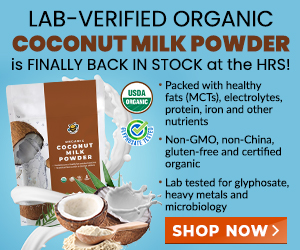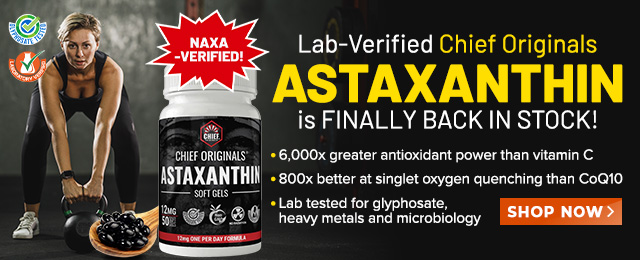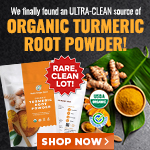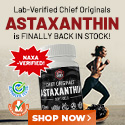Brand name drugs account for just 10% of prescriptions, but majority of spending
Sunday, August 28, 2016 by: Daniel Barker
Tags: brand name drugs, price gouging, Big Pharma

(NaturalNews) The spiraling cost of prescription medications has become a hot news topic again since Big Pharma drug maker Mylan recently hiked the price of its EpiPen allergy injection treatment by more than 400 percent.
This latest price-gouging move by an already highly profitable pharmaceutical company has drawn sharp criticism and raised questions regarding the high cost of drugs in America. This is a system that allows greedy drug makers to take advantage of sick people who often can barely afford their medications in the first place – not to mention keeping up with triple digit percentage price hikes.
On August 23, the Journal of the American Medical Association (JAMA) published a "special communication" exploring "the origins and effects of high drug prices in the US market," and "policy option" measures that could be implemented to address the issue.
Americans spend more than double the average on drugs compared to other developed nations
The authors of the paper noted that Americans spend more on drugs than any other country – an average per capita spend of $858, which is more than double the average amount of 19 other industrialized nations.They also pointed out the fact that brand name pharmaceuticals account for only 10 percent of drugs prescribed, but rake in 72 percent of the total amount spent.
The main reasons for this imbalance, they concluded, are government policies that protect drug companies against competition, effectively granting monopolies to Big Pharma companies like Mylan and others – such as Turing Pharmaceuticals, which notoriously raised the price of a cancer and AIDS drug more than 5,000 percent immediately after purchasing the rights to sell it.
From the JAMA report:
"The most important factor that allows manufacturers to set high drug prices is market exclusivity, protected by monopoly rights awarded upon Food and Drug Administration approval and by patents. The availability of generic drugs after this exclusivity period is the main means of reducing prices in the United States, but access to them may be delayed by numerous business and legal strategies."
Another factor, according to the report, is that physicians often prescribe higher-priced drugs when cheaper alternatives are available. They point out that doctors are often unaware of the price differences due to the "separate roles of patients, prescribers, and payers."
"This separation has traditionally insulated physicians from knowing about drug prices or considering those prices in their clinical decision making and can similarly remove many patients with good drug coverage from considering the price of the medications they 'purchase.'"
The authors recommend several strategies for combating the problem. These include revising patent exclusivity policy, ensuring wider generic drug availability, providing price negotiation options for governmental payers, "generating more evidence about comparative cost-effectiveness of therapeutic alternatives," and actively educating doctors and consumers about such choices.
Mainstream medicine is about profits, not cures
Of course, these recommendations are coming from within the mainstream medical establishment, and although they may be effective in providing some relief to consumers, they don't address what many alternative health practitioners view as a broken and corrupt system that is essentially rotten to its core.The medical establishment as it now exists is fundamentally based on prescribing often dangerous and ineffective (not to mention outrageously expensive) drugs that make billions for Big Pharma interests, and has little or no interest in promoting actual good health.
The allopathic approach ignores the fact that natural, plant-based treatments are far more effective than pharmaceuticals, and that proper diet and lifestyle are the keys to the prevention of disease.
Big Pharma spends millions of dollars each year lobbying to protect its interests – a current example is the $70 million already being spent by drug companies to defeat California's Drug Price Relief Act initiative, which will be on the ballot in November.
Before the November vote, drug industry spending towards killing the initiative is expected to exceed $100 million.
Meanwhile, federal regulatory agencies, staffed by pharmaceutical industry insiders, are doing all they can to suppress alternative medicine by making it difficult – and sometimes outright illegal – to market inexpensive, natural plant-based remedies and dietary supplements.
So tell me: What's really wrong with this picture?
Sources:
JAMA.JAMANetwork.com
FoxNews.com
BostonGlobe.com
LATimes.com
Brand name drugs at FETCH.news
Get independent news alerts on natural cures, food lab tests, cannabis medicine, science, robotics, drones, privacy and more.
Take Action: Support Natural News by linking to this article from your website
Permalink to this article:
Embed article link: (copy HTML code below):
Reprinting this article:
Non-commercial use OK, cite NaturalNews.com with clickable link.
Follow Natural News on Facebook, Twitter, Google Plus, and Pinterest
- Newly released JFK files reveal Pentagon's role in creating Lyme disease and covid in the same lab
- Oncologist warns of ‘terrifyingly aggressive’ cancers in children, linked to immune suppression from COVID vaccines
- NIH study, buried for decades, reveals that Flu Shots INCREASE elderly deaths, not prevent them
- Trump administration CUTS FUNDING to Gavi, the Vaccine Alliance - a major blow to the Bill Gates-backed entity
- Health Ranger Report: Ashton Forbes discusses TELEPORTATION ORBS and their role in MH370 disappearance
- Musk targets “strangely wealthy” lawmakers in DOGE probe, names Pelosi, McConnell, Schumer
- COVID-19 scandal linked to CANCER SURGE: Billionaire researcher sounds alarm
- Millionaire fitness coach charged in Tesla vandalism incident as anti-Musk attacks escalate
- EPA banned chemical linked to cancer, Parkinson's and fatal heart defects in babies - now industry is lobbying to get it reinstated
- “Ethically sourced” human “bodyoids” could usher in a new era of medical exploitation, raising disturbing ethical questions
- Woman contracts WORLD'S DEADLIEST VIRUS after unknowingly being given the WRONG VACCINE
- DARPA: The shadowy innovator behind the world’s most advanced military technologies
- Ancient kitchen secrets REVEALED: How garlic, ginger and green onions fight cancer and heart disease
- Civil war is here – Multiple events, from conservatives being “swatted,” to attacks against Telsa owners, happening across America as Dem politicians are telling supporters to ‘fight in the streets”
- Tackling the rubber waste crisis: Groundbreaking study reveals eco-friendly method to recycle tires
- RFK Jr. is pushing Big Pharma ad ban - and corporate media is panicking
- NYT admits U.S. ran Ukraine war operations-Russia's victory exposes obsolete NATO tactics, says Mike Adams
- Homesteading Boom: How families are escaping cities to grow their own food
- Newly released JFK files reveal Pentagon's role in creating Lyme disease and covid in the same lab
- Analysis: The coming economic collapse, a mass uprising and Trump's three secret weapons to halt the growing revolt
- Trump's greatest betrayal so far: Accelerating Middle East wars, silencing dissent, and serving Zionist masters
- CDC finally halts $11 billion COVID funding scam as health officials admit the ‘pandemic’ was a fraud
- The hidden dangers in your kitchen: How cooking methods impact diabetes, cancer and aging
- Kiss Your Genetic Privacy Good-Bye! 23andMe Gets Green Light to Sell Your Intimate Genetic Details to Anyone They Want
- DEADLY DECEPTION: How COVID vaccines increased mortality rates and why authorities hid the truth
- Dr. Suzanne Humphries makes bombshell appearance on Joe Rogan podcast, exposing vaccine industry deception back to POLIOMYELITIS
- Trump nominates VACCINE ZEALOT Susan Monarez to lead the CDC, sidelining RFK Jr.'s reform efforts
- Here are TEN all-natural ways to protect your garden without using harmful chemicals
- Woman contracts WORLD'S DEADLIEST VIRUS after unknowingly being given the WRONG VACCINE
- Senate Democrats deny censorship industrial complex existed, defend government's role in silencing dissent
- Black cumin seed oil emerges as a powerful ally against breast cancer and chronic inflammation
- Sugar-free deception: Artificial sweeteners hijack hunger signals, fuel obesity epidemic, study warns
- “Independent” anti-Russia outlet MEDUZA faces COLLAPSE as US funding dries up
- The Health Ranger releases “Vaccine Zombie” song and music video, using AI-animated zombies for the music video
- Discovery of vast underground city beneath Giza pyramids challenges human history
- Key nodes of Federal Government censorship
- Newly released JFK files reveal Pentagon's role in creating Lyme disease and covid in the same lab
- California's social media censorship law struck down: A victory for free speech or a threat to online safety?
- EPA advisor admits the agency is funneling billions to climate groups ahead of Trump’s return to White House
- The Health Ranger releases “Vaccine Zombie” song and music video, using AI-animated zombies for the music video
- Dr. Mike Yeadon releases 15-minute testimony - WATCH - about genocidal intent of COVID “vaccines”
- Florida takes a stand: DeSantis proposes permanent ban on mRNA vaccine mandates
- “Why we influenced the 2020 elections”: Facebook files reveal the coordinated effort to bury the Hunter Biden laptop story
- Mike Adams releases country western hit single: Goin’ Back in Time is Comin’ Home
- The pandemic as a tool for INDOCTRINATION: Understanding “The Indoctrinated Brain” by Dr. Michael Nehls
- Unpacking the Lies That We’ve Been Fed – new song and music video released by Mike Adams, the Health Ranger
- Mike Adams releases music poetry sensation: A Child of God
- House Intelligence Committee calls for the ARREST and PROSECUTION of Dr. Anthony Fauci
- Rep. Nancy Mace introduces bill to ban biological males from female facilities on federal property
- Michigan sheriff announces criminal investigation into 2020 election crimes, Dominion Voting Systems
- Peter Rost exposes Big Pharma corruption in his book “The Whistleblower: Confessions of a Healthcare Hitman”
- Migrants are taking advantage of recent hurricanes to scam residents and loot their homes
- Sugarcane extract superior to cholesterol-lowering drugs?
- Survival 101: Effective EMF blocking techniques
- Red Cross issues warning to stop blood plasma donations from vaccinated people
- Scientists confirm: GENIUS brain function can be spontaneously unleashed in humans without any apparent cause
- EPA advisor admits the agency is funneling billions to climate groups ahead of Trump’s return to White House
- HYSSOP: What research reveals about the health benefits of this ancient holy herb
- Two containers with completed ballots fall out of truck in Florida
- Fully vaccinated about to see “tsunami” of illness and death, warns virologist
- Global leaders unite to clamp down on “misinformation” with UN-backed Cascais Declaration
- BREAKING: 2025 NDAA authorizes mandatory military draft of WOMEN across America… as Pentagon pursues global NUCLEAR war with both Russia and China at the same time
- Michael Yon warns of a ZIONIST TAKEOVER in Trump’s second administration
- BOMBSHELL: DNA testing kits are a SCAM to develop ethnic-specific bioweapons
- Ozempic and Wegovy weight loss drugs are injectable LIZARD VENOM PEPTIDES that may unleash a devastating wave of organ failure… side effects align with symptoms of SNAKE BITES
- Israeli soldiers accused of even more torture and abuse in the West Bank
- These 13 countries just signed an agreement to engineer a global FAMINE by destroying food supply
- NASA admits that climate change occurs because of changes in Earth’s solar orbit, and NOT because of SUVs and fossil fuels
- RFK Jr. clears key hurdle: Sen. Susan Collins backs controversial HHS nominee, signaling a new era for health policy
- Sermon 30: How Jesus reveals Caesar’s FAKE CURRENCY and FALSE AUTHORITY
- Coriander seeds: Ancient medicine backed by modern science
- Arizona officials claim Maricopa County needs 10-13 days to tabulate results of the election
Science News & Studies
Medicine News and Information
Food News & Studies
Health News & Studies
Herbs News & Information
Pollution News & Studies
Cancer News & Studies
Climate News & Studies
Survival News & Information
Gear News & Information
News covering technology, stocks, hackers, and more



"Big Tech and mainstream media are constantly trying to silence the independent voices that dare to bring you the truth about toxic food ingredients, dangerous medications and the failed, fraudulent science of the profit-driven medical establishment.
Email is one of the best ways to make sure you stay informed, without the censorship of the tech giants (Google, Apple, Facebook, Twitter, YouTube, etc.). Stay informed and you'll even likely learn information that may help save your own life."
–The Health Ranger, Mike Adams












































